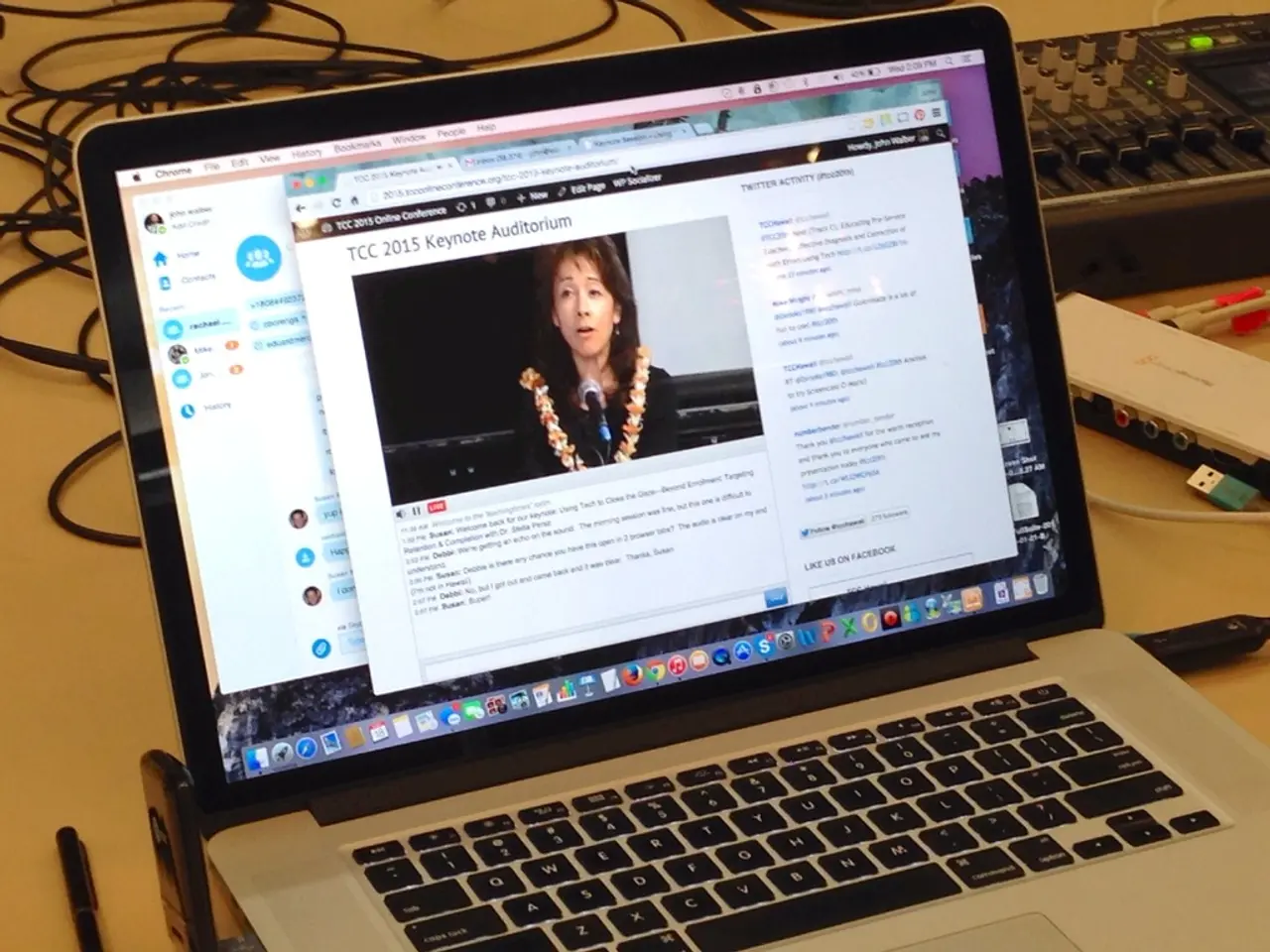Strategies for Managing App Store Critiques: Comprehensive Guide
Revamped Guide to Brace up Your App with the Power of Reviews and Ratings
Let's dive into the world of app development, where ratings and reviews reign supreme. Get ready to learn the ins and outs of this dynamic duo and transform your app game!
First things first, what exactly are app store reviews and ratings?
App Store Reviews: Users share their experiences through public feedback, rating apps on a scale of 1 to 5, and leaving written reviews to describe their likes, dislikes, or suggestions for improvements. Reviews are an ideal place for potential users to find out about the nitty-gritty of an app, while developers can benefit from users' perspectives for app enhancement.
App Store Ratings: These are quick numerical feedback from users, ranging from 1 to 5 stars, with 5 being the highest. While ratings provide a summary of general sentiment toward an app, they don't reveal all the intricacies of the user experience like reviews do.
Now, let's set the record straight about the differences between app store ratings and reviews.
| App Store Ratings | App Store Reviews || --- | --- || Numerical feedback offering a general sentiment about an app. | Detailed written accounts sharing comprehensive feedback about app experiences. || Influences user's at-a-glance perception of an app's quality. | Offers developers actionable feedback for app improvement. || Shown on app store search results, product pages, and featured categories. | Displayed on the app's product page and managed by developers through App Store Connect. || Plays a significant role in an app's visibility, search ranking, and user perception. | Gives developers the opportunity to respond to reviews, engaging directly with users. |
Now that we reached a solid foundation in app store ratings and reviews, let me help you understand the importance of reviews in your app success journey.
Why do app store reviews matter, anyway?
- Decision Making: App store reviews help users make well-informed decisions by providing insights into what they can expect from the app.
- App Discoverability: Positive reviews improve an app's discoverability by boosting its search ranking and visibility in app stores.
- Feedback for Developers: Reviews offer valuable input for developers, allowing them to make data-driven decisions for app improvements.
- Conversion Rates: High ratings and positive reviews can lead to better keyword rankings, increased visibility, and higher conversion rates.
- Social Proof: Ratings and reviews act as social proof of an app's quality and influence a user's willingness to download and engage with the app.
You might wonder, "Do the Google Play Store and Apple App Store have the same guidelines?"
Surprisingly, there are differences in the guidelines and processes for app submissions, even though the end result - user ratings, reviews, and app overviews - might seem similar.
Here's a sneak peek at Google Play Store's rating and review system:
- Rating calculation: Google Play takes into account the most recent ratings, favoring the current quality of an Android app based on user reviews.
- Device-specific ratings: Google Play has introduced device-specific ratings, giving importance to user experiences on similar devices.
- Review guidelines: Google Play sets guidelines to ensure reviews are helpful, informative, and unbiased.
- In-app review API: Google Play offers an in-app review API to make it easier for developers to prompt users for feedback.
Moving on to Apple App Store's rating and review system:
- Rating calculation: Apple calculates the average rating based on all ratings for an iOS app, reflecting the overall user sentiment.
- Device-specific ratings: Unlike Google Play, the Apple App Store displays a single summary rating across all devices.
- Review guidelines: Apple has specific guidelines for app submissions, ensuring the apps are user-friendly, respectful, and provide a high-quality user experience.
- In-app review API: Apple offers the SKStoreReviewController API, which allows developers to ask users for ratings and reviews within the app.
Now that you're familiar with the importance of app store reviews and ratings, let me walk you through the strategies for acquiring positive app store reviews and stellar 5-star ratings.
- Deliver quality: Ensure your app is designed and tested to a high standard before launch. Eliminate app performance issues and enhance its user-friendliness.
- Time ratings and reviews: Prompt users for ratings and reviews after they've had a positive experience with the app. Timing is crucial to secure positive feedback.
- Leverage various channels: Use email campaigns, social media, and industry influencers to encourage app reviews. Simplify the process for new users.
- Respond to reviews: Show users you value their feedback by engaging with them, especially when dealing with negative reviews. Responding demonstrates your commitment to improving the user experience.
- Ethical incentives: Incentivize feedback ethically, like with excellent customer support and an exceptional user experience. One effective method to deliver a top-notch experience is through customer experience automation.
- In-app feedback tools: Include in-app surveys and feedback forms to solicit user opinions and suggestions. This direct line of communication helps you refine your app development process.
- Focus on app design and updates: Pay attention to app design and regularly update the app based on user feedback. Regular updates maintain the app's relevance and satisfy user expectations.
- Monitor and analyze reviews: Regularly review your app reviews to identify app strengths and pain points. Use this information to optimize your app store optimization (ASO) strategy and app store visibility.
- Reset ratings strategically: If necessary, reset ratings with a new app release to refresh the app's image. Use this feature sparingly and only after addressing significant issues in the updated version.
- Educate users: Educate users on the importance of their ratings and reviews. Use in-app messages, email, or social media to emphasize the role their feedback plays in app success.
Earning positive app store reviews and 5-star ratings can feel like an uphill battle, but by implementing these strategies, you'll be on the right track to app success. Remember, quality, testing, and excellent customer support are the keys to a positive app store presence. Reach the right people by signing up for our newsletter to get the resources you need delivered straight to your inbox.
Up next, discover the secrets to top-notch mobile app development and join the elite ranks of successful app developers! Schedule a consultation with us today and make the most of your app's potential.
Enrichment Data:
- à App store reviews and ratings give insights into the user experience and provide crucial feedback for app improvement.
- à Positive ratings and reviews significantly impact an app's visibility, search ranking, and conversion rates.
- à Apple and Google have distinct app store review guidelines and use separate methods for rating calculation and device-specific ratings.
- à App stores like Apple actively monitor and remove fraudulent ratings and reviews to preserve the integrity of the feedback system.
- à User decision making, app discoverability, feedback for developers, conversion rates, and social proof are all significant factors influenced by app store ratings and reviews.
- In app marketing strategies, app development teams should prioritize app design and provide excellent user experiences to encourage high ratings and positive reviews on the Google Play and Apple App Stores.
- Comprehending the importance of reviews, developers can utilize various tactics, such as in-app surveys, customer experience automation, and direct communication, to foster positive feedback which greatly enhances an app's visibility, search ranking, and user perception.





